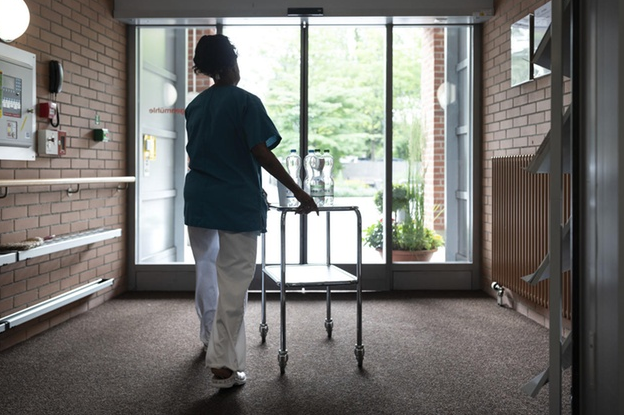Healthcare is one of the key job sectors of the future, analysts say. Retiring baby-boomers and a shifting job market could mean a shortfall of up to 500,000 workers in Switzerland over the next decade, UBS forecasts. The bank proposes plugging the hole not only by immigration, but also by boosting more old and female workers. Basing its projections on long-term employment statistics, the bank says that the number of jobs to be filled could be anywhere between 300,000 and 500,000 over the next decade. The shortfall will be driven by two major trends, UBS explainsexternal link: a lack of workers resulting from the retirement of the baby-boomer generation, and structural changes in the job market (i.e. some areas of
Topics:
Swissinfo considers the following as important: 3) Swiss Markets and News, Featured, newsletter, Society
This could be interesting, too:
Nachrichten Ticker - www.finanzen.ch writes Die Performance der Kryptowährungen in KW 9: Das hat sich bei Bitcoin, Ether & Co. getan
Nachrichten Ticker - www.finanzen.ch writes Wer verbirgt sich hinter der Ethereum-Technologie?
Martin Hartmann writes Eine Analyse nach den Lehren von Milton Friedman
Marc Chandler writes March 2025 Monthly

Healthcare is one of the key job sectors of the future, analysts say.
Retiring baby-boomers and a shifting job market could mean a shortfall of up to 500,000 workers in Switzerland over the next decade, UBS forecasts. The bank proposes plugging the hole not only by immigration, but also by boosting more old and female workers.
Basing its projections on long-term employment statistics, the bank says that the number of jobs to be filled could be anywhere between 300,000 and 500,000 over the next decade.
The shortfall will be driven by two major trends, UBS explainsexternal link: a lack of workers resulting from the retirement of the baby-boomer generation, and structural changes in the job market (i.e. some areas of employment disappearing, others emerging).
And whereas in the past such gaps were filled by immigration, this looks unlikely to be the solution this time, UBS says. The required net annual immigration of 100,000 would most probably “meet considerable political and social resistance”.
One option would therefore be to boost the participation of those not so active in the job market, the bank says. Some 80% of women work, for example, but 45% of them do so part-time. The opportunity to work more “may be attractive”, particularly for women whose children are no longer at school.
Older workers, especially in industries with jobs shortfalls, should be encouraged to work beyond the current retirement age of 65 (64 for women). This could be achieved by offering a more “flexible” pension age rather than a blanket increase in the retirement age, UBS says.
As for the changes coming down the road, “demand for workers may well continue rising in the health and care sectors, but could stagnate in the manufacturing industry”, the bank says.
Indeed, it reckons much of the demand for growth will come from traditionally female roles, while traditional male roles may decline. In this case, the bank says, a “serious rethink” will be needed: “In future, men will increasingly have to try their hand at traditionally female occupations”.
Tags: Featured,newsletter,Society
